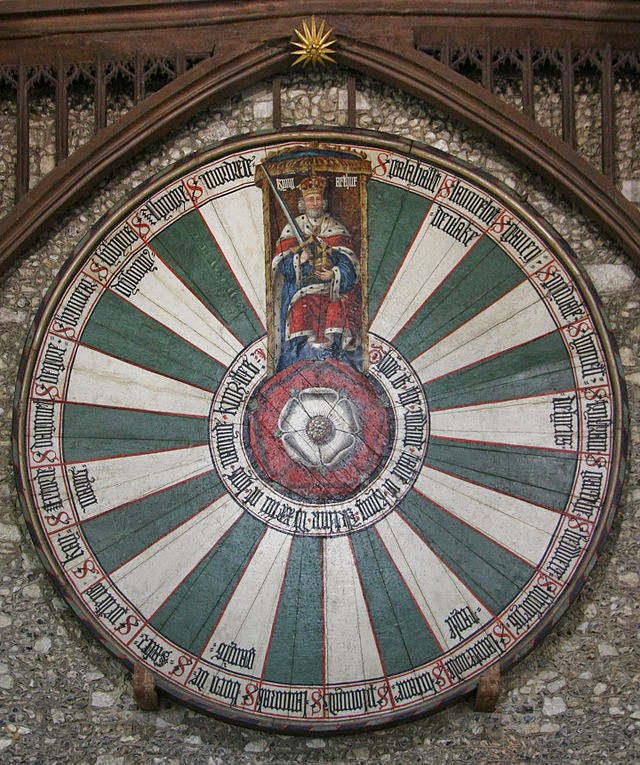Despite William Caxton's assertion that Camelot was to be found in Wales, Sir Thomas Mallory, writing in Le Morte d'Arthur (1485), identified Winchester as King Arthur's Camelot:
...and so by adventure it swam down the stream to the City of Camelot, that is in English Winchester.
Winchester Castle
Winchester Castle, built in 1067 and within a year of the Norman Conquest, served for over a century as the seat of government and was, at the time, considered one of the greatest strongholds in England. It was rebuilt and extended first by Henry III, who added the Great Hall, and then by Edward II who, with his wife, Margaret of France, narrowly escaped death when the castle's royal apartments were destroyed in a fire. During the English Civil War the castle was held by royalist forces and finally fell in 1646 when Oliver Cromwell ordered its destruction. As a consequence, very little remains from the early period.
Charles II later commissioned Sir Christopher Wren to build King's House, with a view of this new royal palace being elaborate enough to rival France's palace of Versailles. However, James II abandoned the plans and only Henry III's Great Hall survived, giving us a small glimpse into how the original castle may have looked.
King Arthur's Round Table
The Round Table itself bears the names of various knights from Arthur's Court and was probably created for a Round Table tournament, a festival of the Middle Ages. Made of oak, the table measures 18ft across and weighs 1.25 tonnes. The paintwork is late, having been reworked by order of King Henry VIII for the 1520 state visit of the Holy Roman Emperor Charles V, and depicts King Henry VIII sitting in King Arthur's seat above a Tudor rose.
Despite its Arthurian connections, the Winchester Round Table dates from no earlier than the 13th century, when it may have been constructed at the command of King Edward II. It is believed King Edward II was considering a revival of the Round Table as an Order of Chivalry. However, he changed his mind and decided on the Order of the Garter.
There seems to be little, if anything, else to connect Winchester with King Arthur's Camelot. Winchester Castle itself was built in the 11th century, far too late for King Arthur. And the Round Table which hangs in the great hall is again far too late, having been made in the 13th century or later. Many believed that Malory, taking inspiration from the Round Table which hangs there, simply based his Camelot in Winchester as it was a known captial of England.
While there are many locations purported to be King Arthur's Camelot, many believe that the name itself is nothing more than an invention of Chretien de Troyes imagination. After all, the name Camelot was unheard of until the late 1100s. You would expect the name to appear in the oldest literature to tell of Arthur and his Court, yet it doesn't and, for this reason, most claim that Camelot is nothing more than a myth.
However, it is possible that the name Camelot was derived from another place name. It is also interesting to note that Norma Goodrich, described as the foremost living authority on King Arthur, has been quoted saying that it was customary for a king to refer to the castle at which he was staying as 'Camelot'. If this assertion is correct, it may be that there is not just one Camelot, but many.
Useful Resources
Le Morte d'Arthur by Sir Thomas Mallory
Revealing King Arthur: Swords, Stones and Digging for Camelot by Christopher Gidlow
King Arthur: The Truth Behind the Legend Paperback by Rodney Castleden
The Oxford Guide to Arthurian Literature and Legend by Alan Lupack
How King Arthur Worked
Britain Express - Winchester Castle







No comments:
Post a Comment